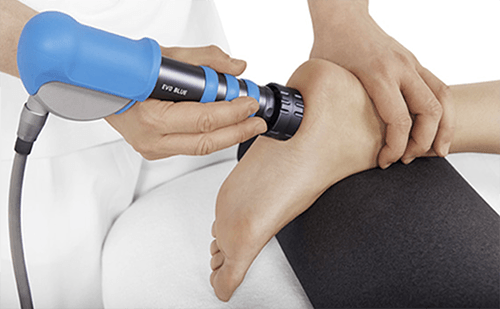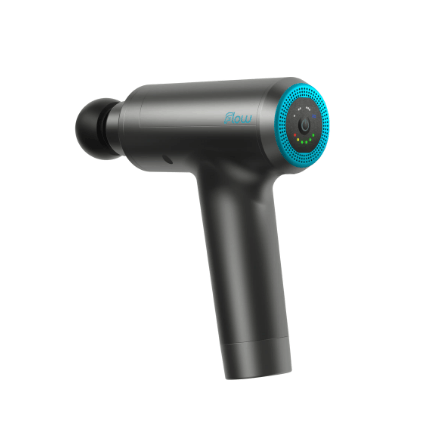Shockwave Therapy
What Is Shockwave Therapy?
Shockwave Therapy is an effective non-surgical treatment for a range of musculoskeletal condition relating to:
- Tendons,
- Muscles and
- Joints.
The therapy involves the delivery of high-frequency shock waves to the injured tendon to stimulate healing.
Shockwave Therapy has been used for many years as an alternative to invasive surgeries or traditional rehabilitation.
What Is Shockwave Therapy?
Shockwave Therapy is externally (extracorporeally) administered using a portable device and is also known as:
- Shockwave or extracorporeal pulse activation therapy (EPAT) to stimulate blood supply and metabolism, and promote healing
- Extracorporeal shockwave therapy (EST) may be performed where high-energy soundwaves are delivered to treat nerve problems
Who Is Shockwave Therapy Suitable for?
Shockwave Therapy is suitable for injuries that fail to respond to conservative treatment methods such as:
- Rest,
- Pain medications and
- Physical therapy
do not show improvement even when used over a period of 6 months, and is used as an alternative treatment modality to surgery.
Shockwave Therapy can be used
- Soon after the occurrence of injury to stimulate immediate and ongoing repair,and
- For the treatment of older injuries where calcification or damage of tissue is evident.
Additionally, Shockwave Therapy is an important adjunct therapy for treating painful tendons or joints suffered by active people.
How Does Shockwave Therapy Work?
Extracorporeal shock waves work on several levels. Pain is initially reduced by hyperstimulation anaesthesia that diminishes nerve pain signals relayed to the brain. The therapy helps by depleting the number of pain mediators emanating from nerve endings, resulting in a reduction of pain experienced.
It also assists in fighting local inflammation and stimulates repair and regeneration of musculoskeletal tissues by improving blood supply to the affected area.
The shockwave energy, although targeted in one area, expands wave-like within the body to heal surrounding areas. The microtrauma associated with shockwave therapy promotes various processes that agitate and heal.
What Does Shockwave Therapy Involve?
Shockwave Therapy is usually administered within the practice, with the patient relaxing comfortably during the procedure.
The Shockwave device delivers acoustic shock waves that penetrate the skin and stimulate natural tissue repair mechanisms. A session involves the following steps:
- The target area is located, marked and applied with ultrasound gel.
- A hand-held probe is moved over the skin of the affected site.
- The device is held lightly on the skin.
- Sound waves are given as short pulses of less than 1 microsecond, with 1 to 4 pulses being applied per second and can involve 1000 to 4000 pulses.
- Single Foot Treatment: 45 minutes for your Initial Consultation and follow up appointments will take 20-30 minutes.
- Bilateral Foot Treatment: 30-45 minutes for Bilateral Treatment.
The number and intensity of the sound waves will depend on the severity of the conditions.
Complete treatment may require 3-5 sessions of therapy at weekly intervals.
Recovery After Shockwave Therapy
Patients are able to head home immediately after the procedure.
Pain relief medication may be prescribed to deal with ongoing pain during recovery.
Due to the nature of the treatment, natural healing of the body will continue for several months, and many patients also experience immediate relief of major symptoms after shockwave therapy.
You can return to work or do normal activities within one or two days after the therapy. It is advisable to avoid strenuous activity for 48 hours after treatment.
Avoid anti-inflammatories.
Other Applications for Shockwave Therapy
In cases of tendinitis and related disorders, the onset of the condition can be sudden and may appear without the occurrence of associated trauma.
In other instances where damage to an Achilles tendon is experienced as a slight discomfort while actively participating in sport may result in intense pain and inability to walk properly once the tendon has cooled down.
These conditions can last for months or even years if left untreated.
Side Effects and Recommendations After Shockwave Therapy
The procedure is safe and can be performed for several weeks in succession for optimum results. Shockwave therapy has almost no side effects.
Some patients may experience temporary redness, pain and swelling at the site of treatment, but patients that report mild pain or discomfort during treatment, find relief quickly after treatment.
The safety of shock wave therapy has not been evaluated in pregnant women and children and should not be used for them.
Mini Flow Massage Gun
The Flow mini is designed for Athletes, Sports Physiotherapists, and Professional Sports teams across the world to help speed up recovery and improve performance. The Mini Flow Massage gun gives a precision sports massage via four levels of powerful vibration. The Mini Flow Massage is used on patient's after receiving Extracorporeal Shockwave Therapy. The mini flow helps to release trigger points, assist with break-up of scar tissue and stimulates proprioceptors and stretch reflexes in a similar way vibration plates do.







